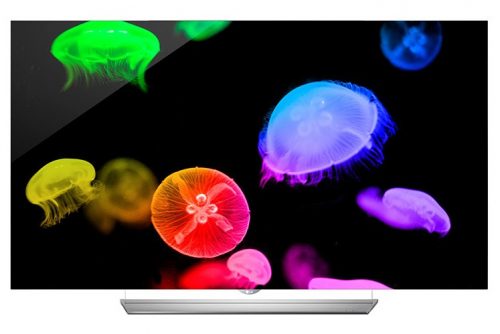Samsung has been developing quantum dot for a couple of years already. They rebranded their quantum dot TVs as QLED in 2017. Some might say the acronym QLED looks a lot like OLED but the two technologies are completely different. But which is better and which should you buy? That’s a difficult question to answer, especially since Samsung has launched a new range of QLED TVs in 2018 which promise to top last year’s models. And they certainly look impressive, even against the best OLED TVs.
What is QLED and OLED?
Let’s start with OLED. OLED TVs are emissive which means that each pixel emits its own light. If a pixel is turned off, it emits no light and is therefore black. This is how OLED TVs can offer their “infinite” contrast ratios and why their blacks are so deep.
So what is quantum dot? It’s a bit like OLED because the tiny molecules, the quantum dots, emit colored light when light is shone on them. These quantum dots are contained in a film which forms just one of many layers making up a QLED TV. In short, a QLED TV is an LCD TV with an added quantum dot layer that improves brightness and color compared to ‘standard’ LED LCD TVs. Not all OLED TVs are identical in their architecture and neither are QLED TVs.
Which is sharper?
In technical terms, OLED is theoretically sharper because it can turn each individual pixel on or off. With quantum-dot sets, because there’s an afterglow and light leakage behind the LCD layer, it tends to blur the edges around bright objects.
Which delivers deeper blacks?
There is no debate: OLEDs are the only sets that can deliver true black. The backlighting system necessary to make QLED sets work means it’s virtually impossible to completely eliminate light leakage

Which is brighter?
Quantum-dot LCD sets, including Samsung’s QLEDs, are brighter than OLEDs. They simply put out more light, making them more appropriate for sunny rooms where brightness counts.
 Which has better color?
Which has better color?
Overall, a well-designed QLED TV can deliver a wider range of colors than an OLED set. They can also be more accurate, with more faithful reds, for example. Nevertheless, how wide a color range or how many colors a display can reproduce still varies from set to set. Some OLEDs, such as LG OLED evo C4, can match or best quantum-dot sets in this regard.

What about contrast?
While quantum-dot LCDs struggle with inky blacks, they tend to do better at bringing out the subtle changes between dark and light areas. Overall, top QLED sets have a wider contrast range and can reveal some picture details OLEDs miss.
What about viewing angles?
Most of us don’t sit dead center in front of the TV. We’re usually at one end of the couch or the other, which means we’re viewing the set off-center. Samsung’s QLED TV’s from Buydig.com are definitely an improvement in terms of viewing angles over previous generations of quantum-dot sets and most LCDs. However, LG’s OLEDs like the C7P-Series 4k Ultra HDR Smart OLED from Buydig.com are still far superior in this regard, holding their images, colors and crispness even if you are sitting a little askew in your bean bag chair.
So which is better, QLED or OLED? Well, it’s a tight race. With Samsung expected to announce its new and improved QLED this March, it’s going to get even tighter!
thanks for the sharing blog
THANKS FOR THE SHARING YOUR ARTICLE.